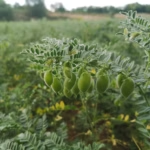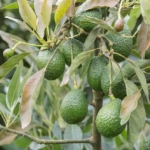Developing an effective sales and distribution strategy for agroprocessed products is crucial for maximizing sales and reaching target markets. Here are some tips to help you develop a successful strategy:
- Identify your target market: Begin by understanding your target market’s needs, preferences, and consumption patterns. Consider factors such as demographics, geographic location, and buying behavior. This will help you tailor your strategy to effectively reach and appeal to your target audience.
- Analyze the competition: Conduct a thorough analysis of your competitors in the agroprocessed products industry. Identify their strengths, weaknesses, pricing strategies, distribution channels, and marketing tactics. This will provide valuable insights into how you can differentiate yourself and gain a competitive edge.
- Set clear objectives: Define your sales and distribution objectives. These could include increasing market share, expanding into new territories, boosting product awareness, or achieving specific sales targets. Clear objectives will guide your strategy and help you measure success.
- Develop a compelling value proposition: Determine the unique selling points of your agroprocessed products. Communicate how your products meet customer needs, offer superior quality or value, and provide benefits over competitors’ offerings. A strong value proposition will help differentiate your brand and attract customers.
- Build a robust distribution network: Establish a well-structured distribution network to ensure efficient and timely product delivery. Consider partnering with wholesalers, retailers, distributors, or agents who have an established presence in your target market. Evaluate the cost-effectiveness, reliability, and reach of different distribution channels.
- Optimize pricing strategy: Set prices that are competitive yet profitable. Consider factors such as production costs, market demand, competitor pricing, and perceived value. Pricing should align with your positioning in the market and the value your agroprocessed products provide.
- Invest in marketing and promotion: Develop a comprehensive marketing and promotional plan to raise awareness and generate demand for your products. Utilize both online and offline channels, such as social media, trade shows, advertising, content marketing, and public relations. Tailor your messaging to highlight the unique features and benefits of your agroprocessed products.
- Provide exceptional customer service: Focus on delivering excellent customer service to build long-term relationships and customer loyalty. Respond promptly to inquiries, address concerns, and provide post-sales support. Positive customer experiences can lead to repeat purchases and word-of-mouth referrals.
- Monitor and adapt: Continuously monitor the performance of your sales and distribution strategy. Track sales data, customer feedback, and market trends. Identify areas of improvement and make necessary adjustments to optimize your strategy over time.
- Foster partnerships and collaborations: Consider forming strategic partnerships and collaborations with other companies in the agroprocessed products industry. This could involve joint marketing initiatives, cross-promotion, or co-branding efforts. Collaborations can help expand your reach and enhance brand visibility.
Remember, developing a sales and distribution strategy for agroprocessed products requires ongoing evaluation and adaptation. Stay agile and responsive to market changes and customer needs to ensure sustained success.









